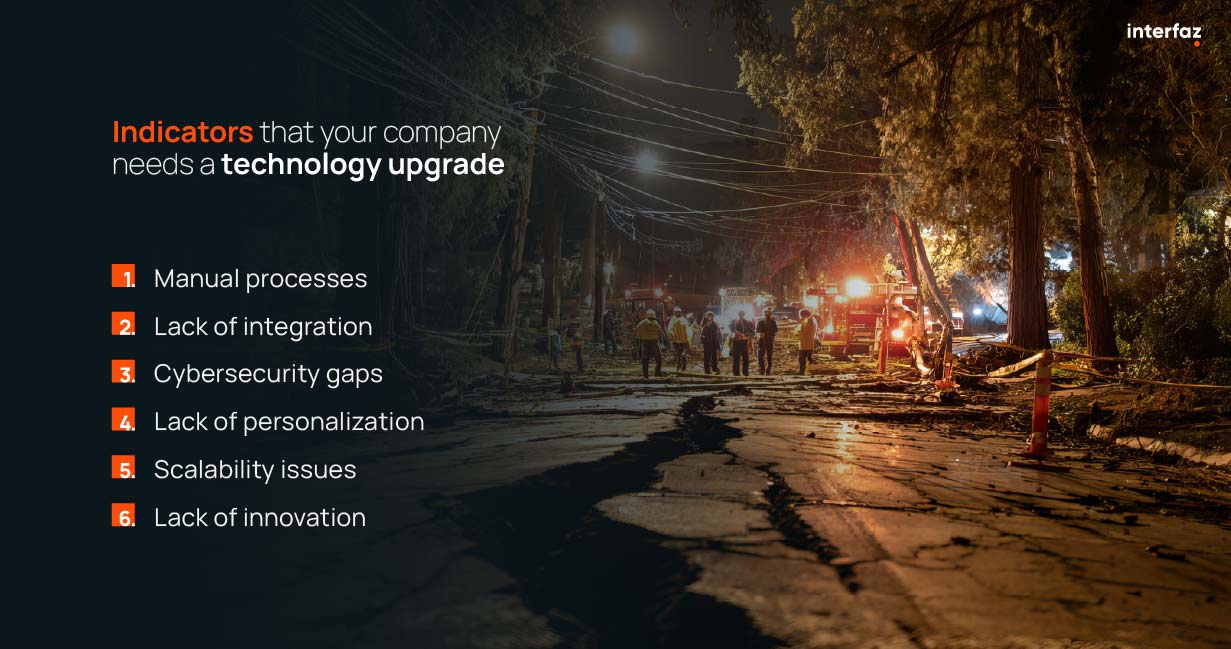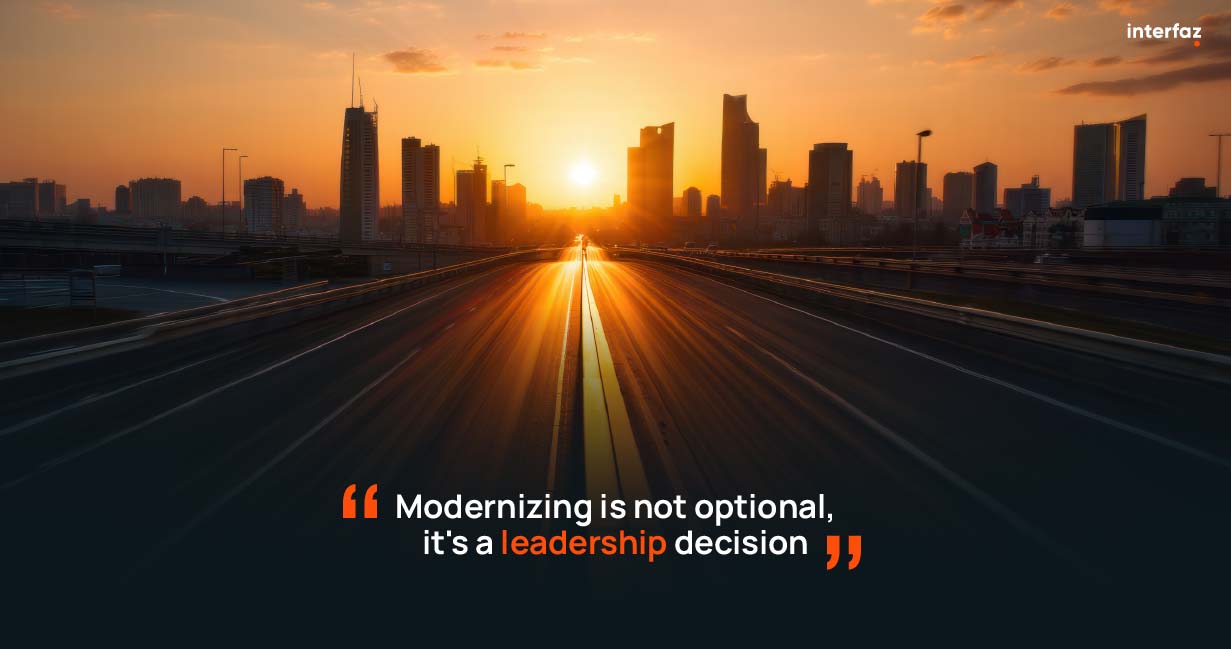Cities that don’t invest in infrastructure eventually collapse. Outdated roads, inefficient transportation systems, aging power grids, and many other problems lead to their decline.
The same thing happens with companies that don’t keep up with technological updates. What was once a modern solution or process might now be outdated. In fact, it could be draining resources, creating bottlenecks, or even blocking growth.
An outdated tech infrastructure without maintenance or upgrades turns into an operational burden. That’s why, in this blog, we’re reviewing six critical indicators that show whether your company is working with obsolete infrastructure.
If your business doesn’t meet these minimum conditions, it’s time to take action.

6 signs your company needs a technology upgrade
1. Too many manual processes
One of the clearest signs is relying heavily on manual processes that hurt productivity. These are repetitive tasks that require significant human effort.
There are hundreds of digital tools designed to automate such tasks. Still, many companies stick to traditional methods. Like managing sales through Excel spreadsheets, for example.
According to McKinsey, companies that automate repetitive tasks see a productivity boost of around 30% to 40%. When people spend a large part of their day on operational work, it wastes time and increases the risk of human error.
Leaders and managers in these companies need to reconsider their approach. Upgrading to automation tools can drive significant progress.
2. Lack of integration between systems
Another sign your company needs a tech upgrade is poor integration between the systems and tools you use. Often, each department has its own platform, and they don’t communicate well with each other. This siloed information makes collaboration difficult.
Deloitte recently reported that 62% of top-performing companies use integrated ERP (Enterprise Resource Planning) systems, which give them a comprehensive view of their business.
Companies that lack this kind of integration are forced to work with uncertain or incomplete data. Leading to delays and poor decision-making.
Upgrading your systems to work together seamlessly will improve many areas of your organization. Software platforms like ERP and CRM (Customer Relationship Management) help centralize data and give real-time access to accurate information.
3. Cybersecurity vulnerabilities
Cybersecurity is essential to any tech infrastructure. Weak security is an open door to cybercrime. Cyber threats are getting more advanced, and companies that don’t update their systems face serious risks.
According to Cybersecurity Ventures, the cost of cyberattacks is expected to hit $11 trillion annually by 2026. This highlights the urgency of investing in secure and modern tech infrastructure.
Companies that don’t invest in proper cybersecurity solutions risk financial losses, and potentially irreversible damage to their reputation and customer trust.
A tech upgrade should include advanced security measures like multi-factor authentication, data encryption, and anti-malware systems.

4. Poor customer experience personalization
Customer experience (CX) is critical to a company’s long-term success. If your organization is still using outdated systems that make it hard to personalize the customer journey, you’re missing a major opportunity to build loyalty and retention.
PwC found that 73% of consumers say a good customer experience is a key factor in their brand loyalty. On the flip side, 32% will leave a brand after just one bad experience.
If you’re not offering personalized experiences, real-time data analysis, or multichannel communication, it’s time to consider upgrading. CRM tools and marketing automation platforms are essential for responding quickly to customer needs.
5. Slow performance and inability to scale
If your company struggles with system slowdowns, frequent downtime, or generally sluggish performance, it’s a clear sign you need a tech upgrade.
According to Gartner, 45% of global organizations plan to increase their investment in cloud technologies by 2026. If you’re still relying on local servers or rigid systems, you’re probably limiting your growth potential.
Upgrading to cloud-based solutions makes it easier to scale. It allows businesses to expand their tech capabilities and adapt quickly to market changes. Without large upfront investments.
6. Lack of innovation
Finally, a major sign that your company needs a tech upgrade is a lack of innovation. It’s not about innovating just for the sake of it, it’s about doing it strategically.
If your organization isn’t taking advantage of the latest tech trends like AI, automation, or big data, chances are you’ll fall behind.
The World Economic Forum emphasizes that adopting emerging technologies is essential to stay globally competitive. Companies that don’t innovate risk losing relevance and market share.

Modernization isn’t optional, it’s a leadership decision
To sum up, a tech upgrade is not just about improving operational efficiency. It’s also a key strategy for staying competitive, driving innovation, and ensuring long-term sustainability.
If you’ve identified any of these warning signs in your organization, now’s the time to act and develop a proactive strategy for technological renewal.
The companies already making these changes are the ones leading their industries. The key is understanding that technology isn’t just a tool, it’s a strategic asset for staying relevant.
Just like cities that don’t invest in infrastructure eventually collapse, companies that don’t upgrade their technology fall off the map.
So, are you waiting for something to break before making a change, or are you leading the way before it’s too late?




